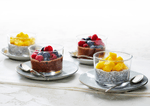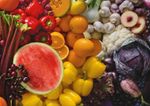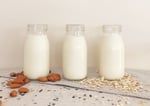Operation Spring Clean: make healthy eating the easy choice
by Jenny Atkins, LiveLighter nutritionist and busy mum
- September 16, 2016
- Leave a comment
- Families
- Healthy eating
- Top Tips
- Sugary drinks
- Cooking
- Shopping
- Fruit and Vegetables
- Weight Management
- Junk Food
- Sugar
- Spring
- Personal Stories
- Budget Friendly
- Smart Swaps
- Nutrition Facts
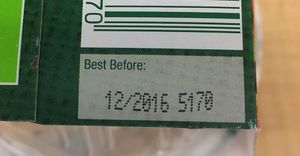
Spring is here and plans start being made to deep clean the house, spruce up the garden and organise the garage and wardrobe. What about your pantry, fridge and freezer? Do you stare at a cluttered fridge and pantry each night wondering what to cook for dinner?
I'm always on the lookout for simple meals that are both delicious and healthy. But lack of time, not planning what to make, or the temptation of quick, packaged (and less nutritious) foods can be a challenge.
Keeping a well-stocked pantry, fridge and freezer is a key to making your own healthy meals and avoiding the expense of takeaway food during the week.
Let’s look at some tips to spring clean and create a healthy kitchen.
1. Check the date stamp
Check the use by or best before date stamp on all your packaged foods. But what do these mean?
- ‘Use by’ date means foods must be eaten by the date for safety reasons. If a product is past this date, it should not be eaten and can’t legally be sold. Throw out anything that has passed its use by date.

- ‘Best before’ is the date after which a product may have lost some quality, but it is still safe to eat as long as it hasn't been damaged, deteriorated or perished. Foods past their best before date should still retain their colour, taste, texture and flavour if they've been correctly stored. By law, foods that have a shelf life longer than two years (e.g. canned foods) don’t need a best before date because they're likely to be eaten before this time.
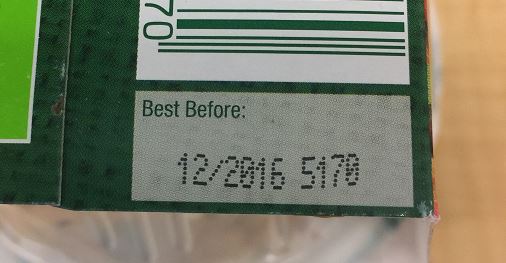
Don't forget to check your fridge for long forgotten sauces and condiments. Put items that are close to their use by or best before date into a separate area and plan some meals to use them up.
Check your freezer for meats, vegetables or pre-cooked meals. Do you know how long they've been in there? Use these first before you stock up on more.
While you are checking your foods, have a read of the label to make sure you have stored it properly. If you've made your own condiments, it's probably best to keep these in the fridge.
2. Where’s the junk in your food trunk?
Have a look in your pantry, fridge and freezer. Are there lots of items high in added fat, salt and sugar – namely junk foods?
Common junk foods include packet chips, lollies and chocolates, biscuits and crackers, frozen pastries (pies, sausage rolls, pizza), sugary drinks (soft drinks, sports drinks, cordials) and high sugar cereals.
Avoiding stocking up on junk foods and sugary drinks in the weekly shop is a small gift to our future self, removing the daily temptation in the fridge and pantry that can make it hard to stick to our healthy eating goals.
3. Healthy options
If you haven't already, stock up on healthy staples that can be whipped up into no-fuss meals.
- Wholegrain pasta, breads and cereals. Stock a variety of pasta shapes, brown rice and easy to prepare grains like couscous and quinoa. Choose cereals that are lower in salt and added sugar. Make wholemeal and wholegrain breads, wraps and rolls your staple purchase.
- Choose healthier oils (e.g. olive, canola) and have a non-stick oil spray to use when cooking.
- Condiments: choose lower or reduced salt soy sauce, reduced-fat salad dressings, and include dried herbs and spices for flavourings instead of salt.
- Have basics to build your meals: canned tuna in spring water, lentils, canned tomato, eggs and frozen vegetables.
4. Storage
If you have children, put foods that you want them to eat at their eye level in the fridge and pantry e.g. cut up fruit, vegetable sticks, nuts and seed mix.
Opened items are best stored in clear airtight containers with the date opened and expiry date marked. I like being able to quickly see what I have and when it needs to be used by. Don’t forget to rotate your items so that you are using the oldest products first.
In your fridge, store foods in the right spots to make them last longer: vegies in the vegie drawer, meat in the meat drawer and condiments in the fridge door shelves. Make it a habit to check the fridge when you are making your shopping list so you don’t replace anything until its run out.
If you are doing a cook-up, prepare more and store it in the freezer for when you are running short on time but still want something home cooked. I often do this with Bolognese sauce, pikelets, meatballs, lasagnes, muffins, soups and scrolls – a mix of lunchbox and dinner freezer meals. It also means that a healthy snack or treat is always available to my family and gives plenty of variety too. I even fill sandwiches ready to make toasties straight from the freezer!
So the big question – what are my kitchen staples?
Fruit, vegies and legumes!
I always have a selection of fresh, frozen, canned and dried fruit and vegies. These form the basis of all my meals – from breakfast to snacks and main meals.
Frozen vegetables are an easy way to quickly add vegies to recipes. Frozen fruit (eg. banana, berries, mango) are a great addition to muffins and pancake batters, or for quick breakfast smoothies.
Canned beans and lentils are handy to add bulk to meals as well as extra fibre. It also helps keep cost down since I end up using less meat. I have dried lentils and split peas to make dahls and lentil soups. Canned fruit is also great to have on hand. We add it to our porridge for breakfast, and because of its sweetness we don’t need to add any sugar… nutrition win!
Dried fruit such as sultanas and apricots are a regular snack and addition our meals. Have you ever added sultanas into a brown rice salad for a sweet pop? It's a favourite in our house :)



